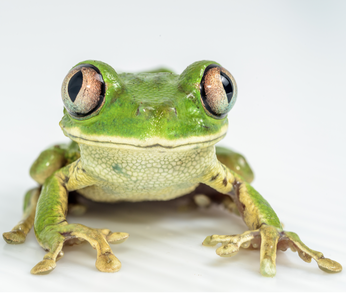|
I am interested in how animals see the world, how eyes evolve across animals with different ecologies and visual needs, and how light and vision can drive large-scale animal distributions and behaviors. I use animal behavior, physiology, morphology, computational modeling, and phylogenetic comparative methods to explore the evolution of visual strategies in both marine and terrestrial environments.
|
|
Evolution of vision in frogs and toads
|
|
Frogs and toads (Order: Anura) exhibit diversity in their larval and adult habitats, mating strategies, visual signaling, life history strategies, activity patterns, and many other ecological factors that may be relevant to vision. However, little is known about visual ecology across this diverse group. In collaboration with Jeff Streicher, David Gower, Rayna Bell, Matthew Fujita, Ryan Schott, Ellis Loew, and Ron Douglas, my postdoctoral research at the Natural History Museum aims to gain insights into the scope and variability of visual capability across anuran diversity and the ecological factors that may drive this variation. Our ongoing work explores the evolution of anuran eye size and eye-body allometry, lens transmission and morphology, pupil shape, the spectral sensitivity of visual pigments, and the molecular evolution of both visual and non-visual opsins.
|
Vision and bioluminescence in deep-sea cephalopods
|
Cephalopods generally have large, well-developed eyes that are important for feeding, predator avoidance, and conspecific signaling. However, many species live in the deep sea, where downwelling sunlight is dim or absent and bioluminescence abounds. This has led to diverse strategies for vision, signaling, and camouflage among deep-sea cephalopods. My doctoral research in the Johnsen Lab at Duke University focused on cephalopod vision and bioluminescence in the deep sea. My work explored the evolution of eye size among cephalopods and implications for visual range in pelagic species, eye growth and in situ behavior in "cockeyed" histioteuthid squids, and the evolution of bioluminescence and photophore distributions among cephalopods. For my dissertation research, I spent time at the Monterey Bay Aquarium Research Institute, the Smithsonian National Museum of Natural History, and the National Evolutionary Synthesis Center.
|


